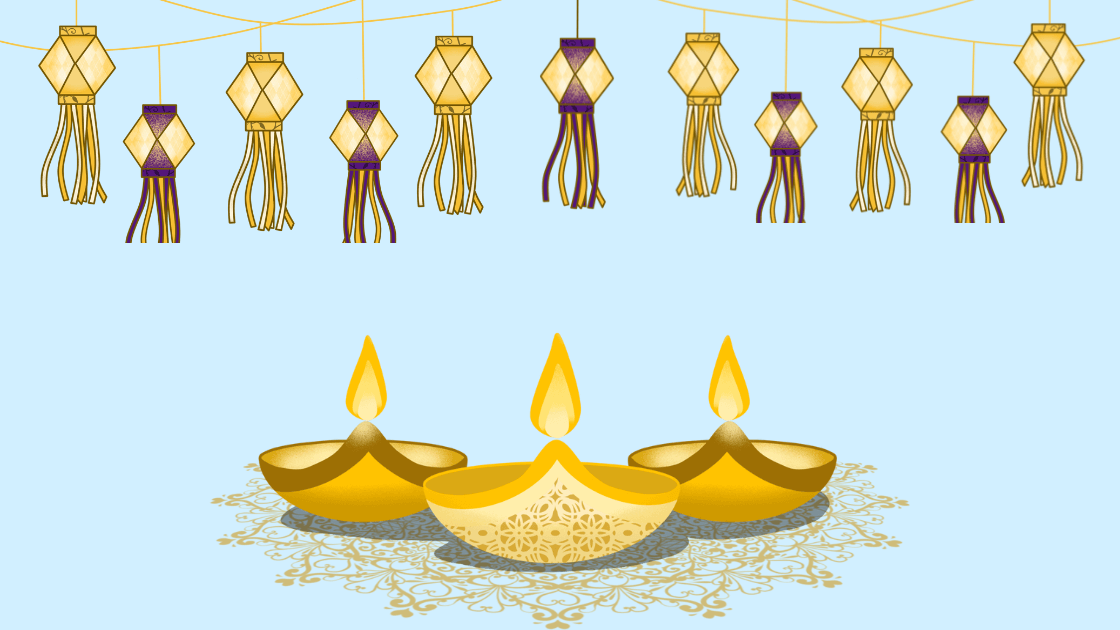The Hindu faith is centered around reincarnation, so the physical body means nothing after death. After Hindu funeral rituals at home, the body is cremated often within 24 hours so the soul can be free to move on and be reborn. Most funeral homes can accommodate Hindi customs.
Hinduism is one of the world’s largest religions. With over a billion followers of the faith, the Hindu faith that originated in India has now become widespread as it spans the globe. Death rituals and funeral rites of Hindu people are important to understand if you ever find yourself either offering condolences or mourning someone who was part of this religion. Hindu funeral rituals have many differences from those practiced in other religions.

Table of Contents
What Rituals Are Performed After Death In Hinduism?
When a Hindu person passes away, the funeral process starts immediately at the time of death. When someone passes away, the body remains in the home until cremation occurs. Unlike in some cultures where it is common for people to die in a hospital or nursing home, it is common and preferred for people to die at home in Hinduism.
The preparation of the body is overseen by either a priest or the eldest son. The intricate process is as follows:
- First, the body is washed with a mixture of honey, milk, yogurt, and ghee.
- The head of the deceased is next anointed with essential oils. Turmeric is used for females, and sandalwood is used for males.
- The body of the deceased is moved into a ceremonial position with the hands put into a prayer position and the big toes tied together.
- The body is then either dressed in nice clothing or wrapped in a white cloth, which is the traditional way.
- Next, a garland of flowers and pinda, or rice balls, are wrapped around the neck of the deceased.
- A lamp is put near the head of the person, and water may be sprinkled on the body as a sign of cleansing.
- Cremation usually happens within 24 hours of death, and some time after the rituals described above have been done. The body does not experience embalming.
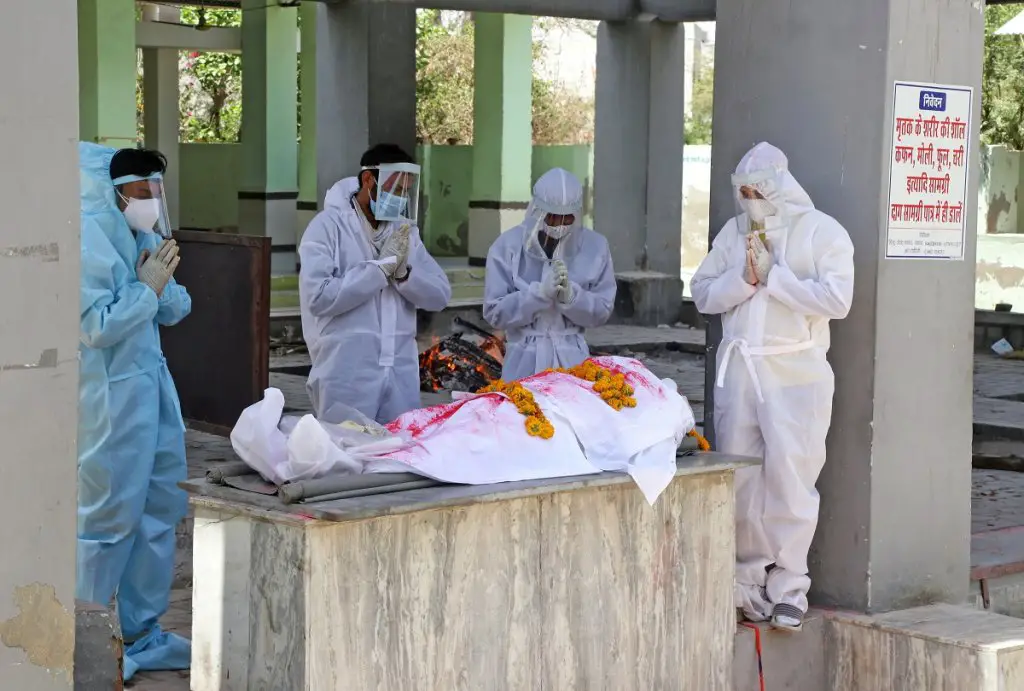
What Are The Traditional Hindu Funeral Rituals?
Once the first phase of Hindu funeral procedures is complete, the body of the deceased is taken to the crematorium feet first. Mourners join together in reciting prayers while the body is brought in.
The body is typically put out in an open casket for mourners to view. It is impolite to touch the body, according to Hindu funeral traditions. Walk by the body, stop quietly and respectfully, then move on.
Mukhagni, or the cremation ceremony, is usually conducted by either a Hindu priest or a senior family member. At one time, the mukhagni was only attended by men. However, in modern funerals, women are also allowed to attend.
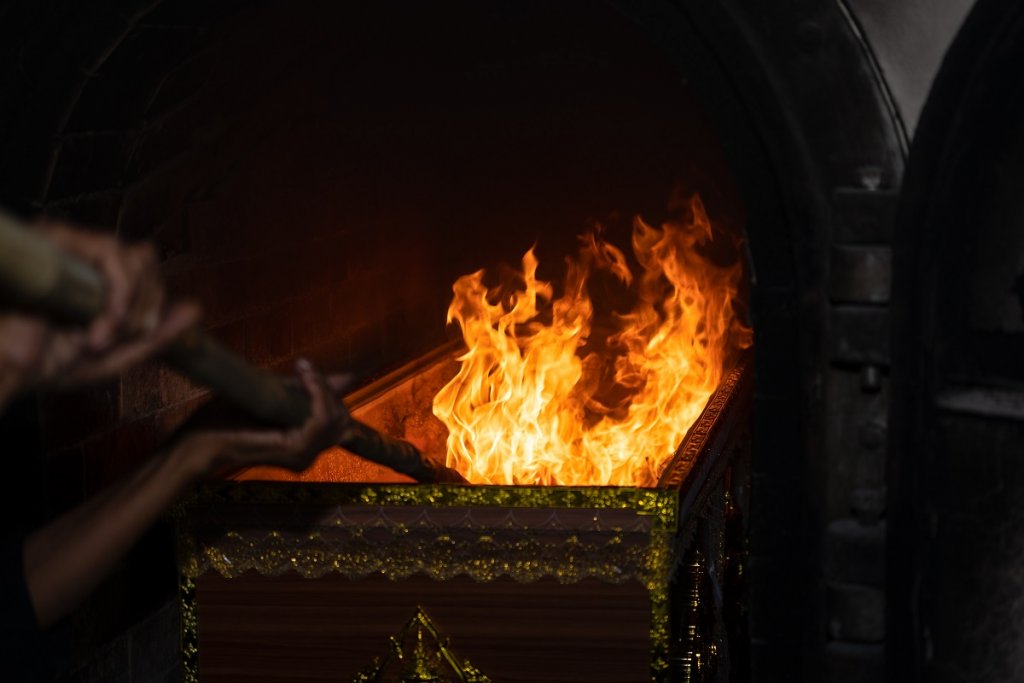
In a traditional cremation, the body is burned on a large funeral pyre rather than in a crematory. Open pyres are not legal in the US (except in Creston, Colorado), so the process takes place in a crematory. A funeral fire cremation would typically burn for about 6 hours vs. the standard 2-3 hours in a crematorium.
Following the Hindu funeral, most often the next day, the ashes of the deceased are scattered over a sacred body of water. Ideally, a person would aspire to be laid to rest in the Ganges River or another sacred river in India. However, if that is not possible, any body of water or place important to the deceased is acceptable. Hindus in the US can use any nearby body of water, although a permit might be needed before scattering the ashes.
If you are at a Hindu funeral, know that you do not want to say “rest in peace” or anything similar. Hindus believe in something called Moksha, which is a liberation from the earthly body. This is why you may hear people say “Om Shanti” or “May his soul attain Moksha” when someone dies.
After the Hindu funeral service, the family returns home to begin the mourning period.
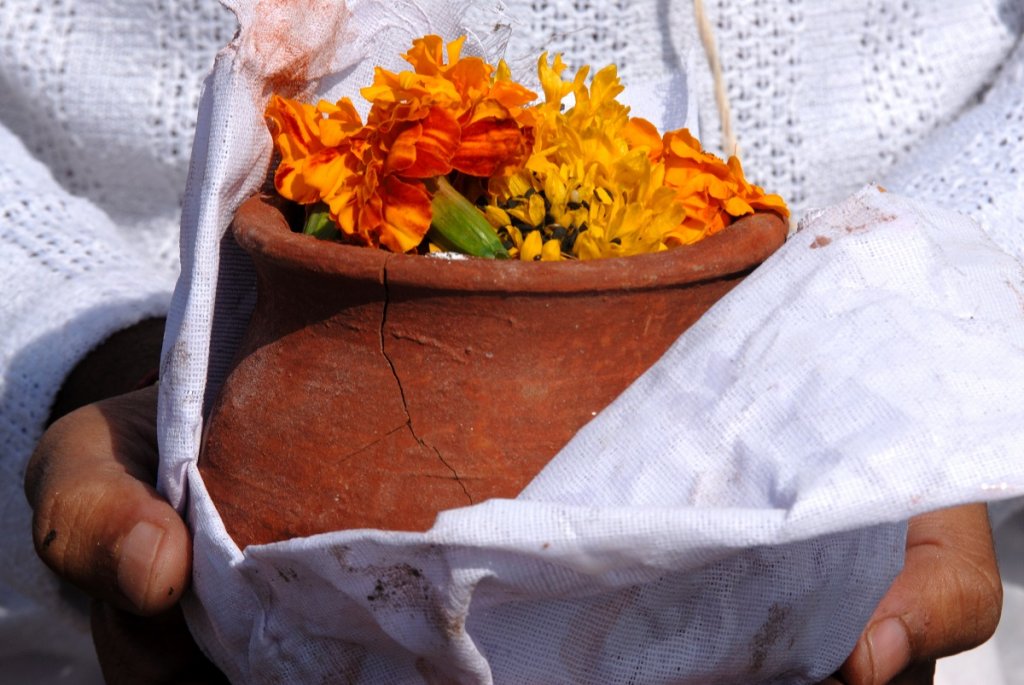
What Are The Rituals That Are Performed During The 13 Days Of Mourning?
The Hindu cremation is the very beginning of the 13-day period of mourning. Hindus believe that after someone dies, the home and immediate family become unclean. This is why they return home for a ceremonial cleansing of the people; then they clean the home.
The officiant, a Hindu priest, will come with incense and say prayers to help return the home to a pure state. During the 13-day period, the family will stay at home; although they may have visitors. The family will display a photo of their loved one with a garland of flowers during this period.
On the 13th day of mourning, the ceremony pieta-karma happens. This ritual is to release the soul so it can be reincarnated.
A ritual celebrates the one-year anniversary of the person’s death. Then, the family hosts a memorial that is meant to honor the life of the deceased at the one-year mark in an event called sraddha.
What Do You Give At A Hindu Funeral?
Although sending flowers to a funeral is not part of the Hindu tradition, it would not be considered rude or improper. If you do send flowers, send white flowers.
However, if you want to send a more appropriate gift, one might be money. A monetary donation does not have to be a large one to be considered in good taste.
You could also send a fruit or other food basket to the grieving family during their mourning period. It would also be a nice gesture to send flowers after the funeral when the family is home and grieving. Just remember that white is the color of mourning.
What Is The Significance Of Wearing White To Hindu Funerals?
White is a color of purity, and both men and women should be dressed in white when attending a Hindu Funeral ceremony. Women should be certain their arms and legs are covered. You may wear a sandal or open-toed shoes to the funeral.
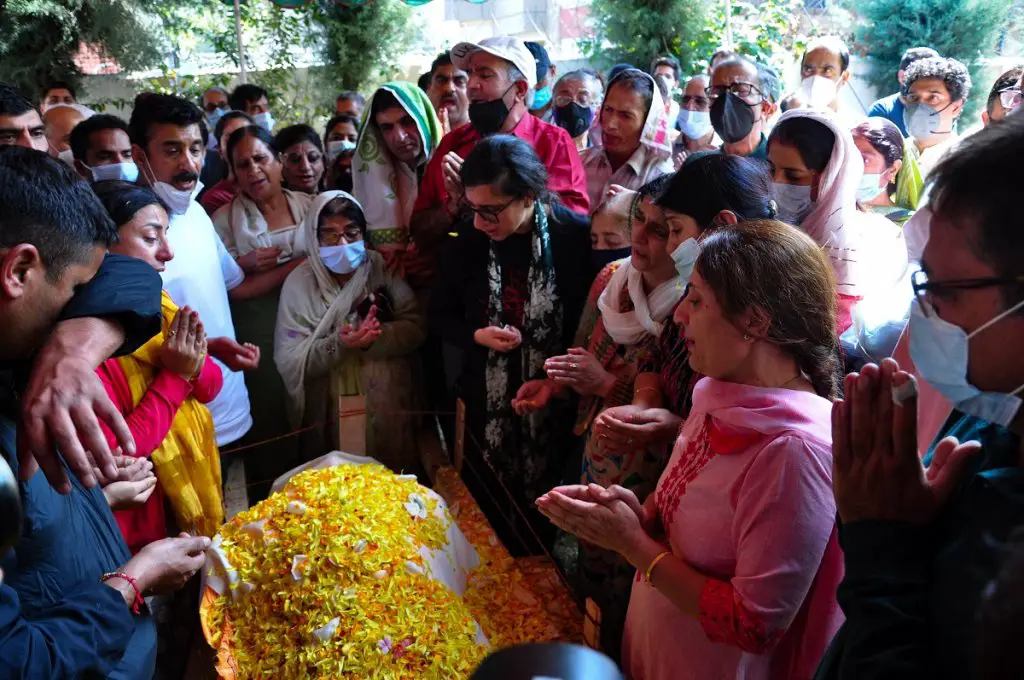
What Is The Hindu Funeral Chant?
Hindu funeral prayers are chants that take the form of mantras. The funeral mantas are thought to help with the release of positive energy, to facilitate divine consciousness, and to help one to achieve eternal peace.
Since the mantras often provide a lot of comfort to mourners, Hindu families and funeral guests often chant them together.
What Is The Traditional Food Served At A Hindu Funeral?
For many, their Hindu beliefs do not allow them to eat any meat after the death of a loved one. Therefore, food served after a funeral would be vegetarian. This is why people often send fruit baskets as a gift to Hindus who are mourning. Rice can make a nice accompaniment to any vegetable main dish you might wish to bring the family.

